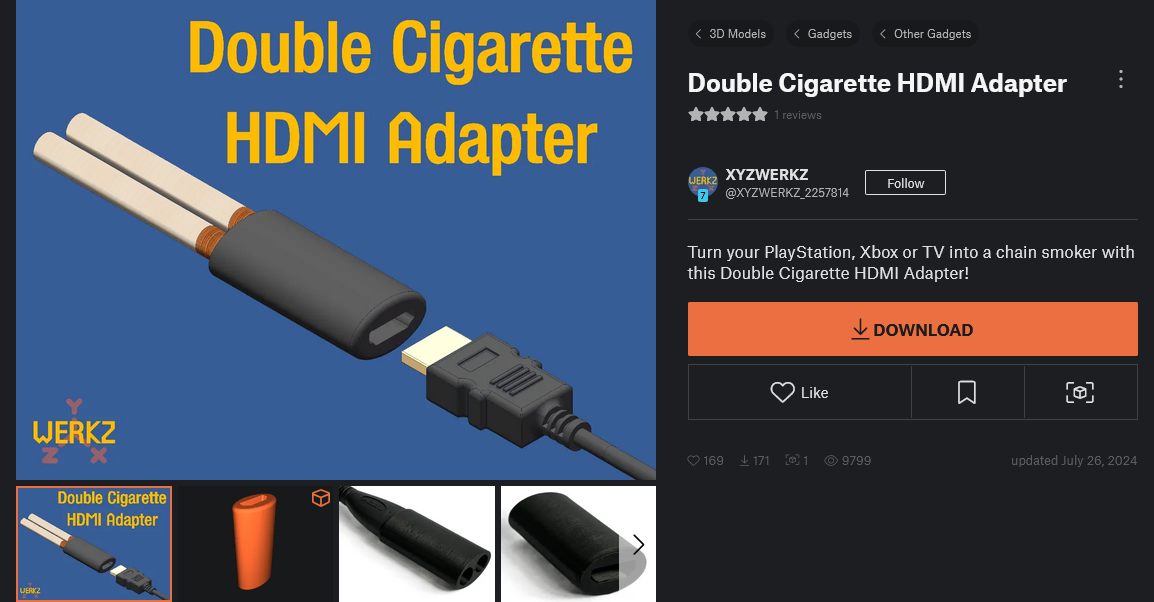

Most people don’t want to pay for AI. So they are building stuff that costs a lot for a market that is not willing to pay for it. It is mostly a gimmick for most people.


Most people don’t want to pay for AI. So they are building stuff that costs a lot for a market that is not willing to pay for it. It is mostly a gimmick for most people.


Here is a guide from the GNU website: https://www.gnu.org/licenses/gpl-howto.en.html


Yes. But it’s despite.


I think the idea of prusa is cool but I feel like they are a bit behind. Especially regarding price to performance. That is what I gathered from the reviews at least. They are pretty reliable but not the latest and greatest tech.


Yeah I did that math myself. I would only do that because I like my Ender 3. But in the end a complete package sounds very tempting.


Don’t misunderstand me. I am very impressed by the performance of the Bambu printers. They really gave the established brands a kick in the butt price and performance wise.
Still it makes me uneasy to have a closed source system. I don’t mind butting some effort into my printer if it is more open. I mean my ender 3 is a lot of work. I’d assume it gets better than that.


I don’t have the space for two printers. But I think too that at some point upgrading makes sense. The Ender 3 is nice to tinker but I want something that just works.


Then post some please.
I think Safari is WebKit.
The double cigarette HDMI Adapter is also great:

https://www.printables.com/model/954886-double-cigarette-hdmi-adapter


I don’t see how they can recover from that. They will get lawsuits from all around the world.
Me. I don’t have an hdr screen.


In my opinion NAT is a hack that makes lot of things harder than they should be. STUN and TURN are services that are created because there is no easy way to connect two hosts between different NATs. UPnP for port forwarding is another. CG-NAT is even worse. I have heard of so many people having problems with it.
Breadcast is messy. It is like screaming into a room and waiting for an answer. Multicast lets the computer decide if it wants and needs to listen to a specific group message.
IPv4 didn’t have cidr from the beginning. They only had classes. IPv6 was designed with complex routing and sub routing in mind.


They never wanted to worry about address space size again. And this makes subnetting much easier. I have a /56 allocation so I could do 256 /64 subnets. I hope that at some point home routers will have the option for seperate subnets built in. This way you could easily have guest, IoT, work or whatever networks without NAT.
One thing you have to consider though is that the minimum network size that allows autoconf is /64 and that because of the privacy extension a device usually has 3-4 IPv6 adresses.


IPv6 changed some things. First and foremost it has a huge address space:
Then they simplyfied some things:
And much more


IPv6 traffic is globally steady at around 37%. So it isn’t a majority by far.


The perpetual chicken egg problem of IPv6: many users don’t have IPv6 because it’s not worth it because everything is reachable via IPv4 anyways because IPv6 only service don’t make sense because they will only reach a subset of users because many users don’t have IPv6…


Germany does tip sometimes. But mostly we round up to the next thing that feels right. For me it is usually between 1-5€, but I never tip a percentage or use the tip option on a payment terminal. Sometimes I just don’t tip. It is never a problem. It is a bonus not a necessity here.
I am very happy with Kagi. Can recommend. In the end someone has to pay for the service. With Kagi I know I don’t pay with my data but with money.